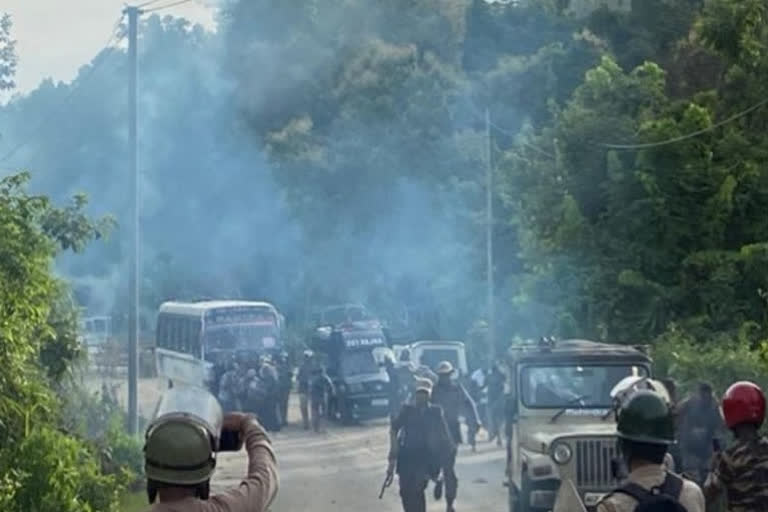New Delhi: Clashes over border disputes (1979-2021) between Assam on one hand and the states carved out of Assam i.e. Arunachal Pradesh, Meghalaya, Mizoram and Nagaland, on the other, have led to the death of at least 157 persons, injuries to at least another 361 persons and displacement of more than 65,729, a report by the Rights and Risks Analysis Group (RRAG) has revealed.
The report, 'Border Disputes in the Northeast: The Raging War Within', released today by the RRAG says, “The victims are citizens of India and the increasing human toll warrants permanent peacebuilding measures.” The same was conveyed by Rights and Risks Analysis Group’s director Suhas Chakma in his letter to the Union Home Minister Amit Shah and Chief Ministers of Assam, Arunachal Pradesh, Meghalaya, Mizoram and Nagaland.
Out of the 157 reported deaths, the maximum number of deaths took place in the Assam-Nagaland border dispute with 136 deaths, followed by the Assam-Arunachal Pradesh border dispute with 10 deaths, the Assam-Mizoram border dispute with 7 deaths, and the Assam-Meghalaya border dispute with 4 deaths.
Also read: Amid border dispute, Assam CM meets PM Modi, Amit Shah in New Delhi
Out of the 361 persons injured, the maximum number of people was reported from the Assam-Nagaland border dispute with 184 persons, followed by the Assam-Mizoram border dispute with injuries to 143 persons, the Assam-Meghalaya border dispute with injuries to 18 persons and the Assam-Arunachal Pradesh border dispute with injuries to 16 persons. The border dispute between Assam and Mizoram mainly intensified in 2018 and the injuries to 143 persons indicate the intensity of the clashes.
“The States usually approach the Supreme Court to resolve the disputes but the demarcation of boundaries is an executive task. Therefore, the Supreme Court usually recommended formation of the boundary commissions. However, if any of the States does not accept the recommendations of the boundary commissions including those appointed by the Supreme Court, little progress can be made,” Mr Chakma further stated.
In the past, the recommendations of the boundary commissions have been consistently rejected. On the Assam-Meghalaya border dispute, Meghalaya had rejected the recommendations of Justice YV Chadrachud Committee which had awarded Langpih to Assam while Assam had accepted the recommendations. But, Assam itself had rejected the recommendations of the three-member boundary commission appointed by the Supreme Court on the Assam-Arunachal Pradesh border dispute which in its 2014 report recommended the transfer of around 70-80 percent of the disputed land to Arunachal Pradesh. The Centre had also constituted two boundary commissions i.e. the Sundaram Commission (1971) and the Shastri Commission (1985) to settle the Assam-Nagaland border disputes but both the States rejected the recommendations of these two committees.
Also read: Border row: Bar Council in NE appeals for peace, seek free movement of vehicles
“The issue has never been the absence of technology and expertise to draw the boundaries of the States but the absence of political will. Satellite mapping to demarcate boundaries and settle such disputes as being suggested by the Ministry of Home Affairs cannot manufacture the political will over claims on territories based on borders drawn by the colonial British as early as 1835 i.e. about 186 years ago,” Mr Chakma stated.
Asking the Chief Ministers to give up one-upmanship, the Rights and Risks Analysis Group (RRAG) recommended to the Ministry of Home Affairs and the State governments to maintain the status quo till final resolution of the boundary disputes and identify the line of de facto control of the areas and deploy police from both the States who will operate under the coordination of the Central Reserved Police Force with respect to any dispute including maintenance of law and order.



